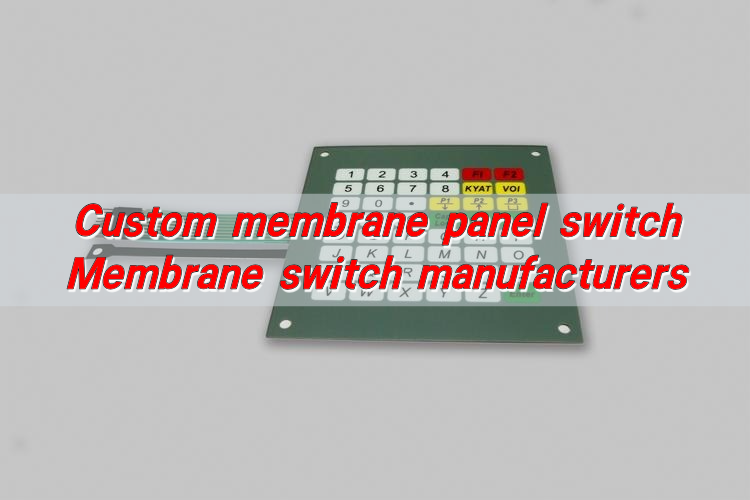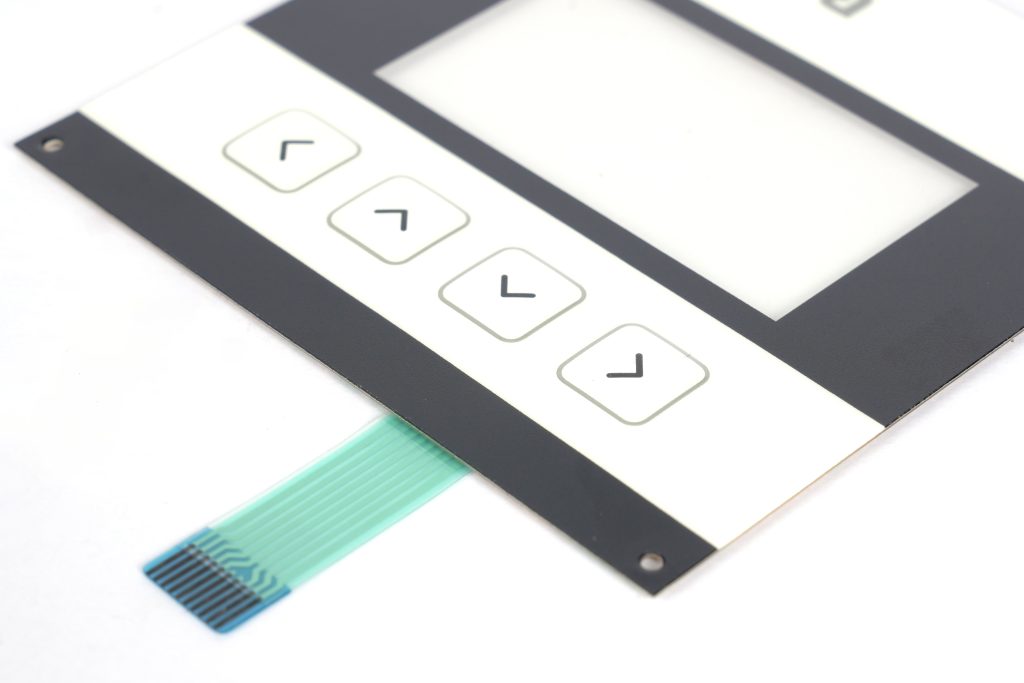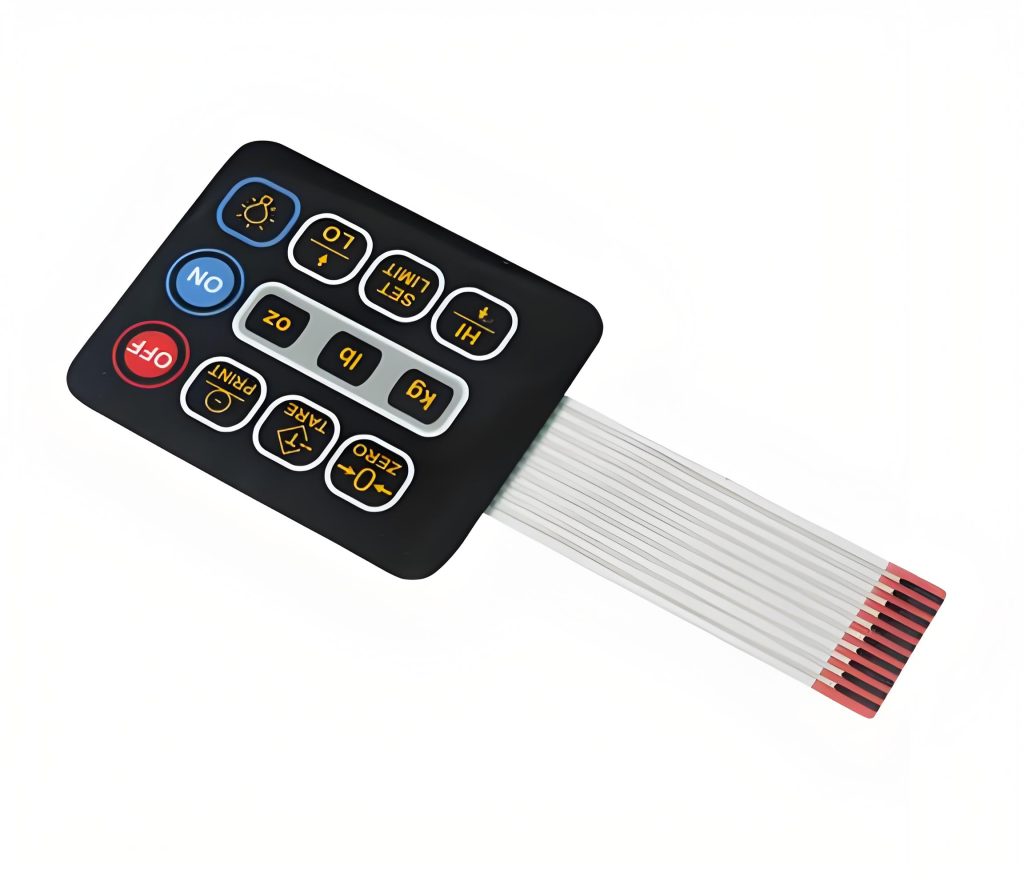
Custom Membrane Panel Switch, Membrane Switch Manufacturers
Custom Membrane Panel Switch, Membrane Switch Manufacturers
What is a switch panel?
Switch panel is the control surface that allows someone to press, tap, or hold a button to activate a function. In older systems, this might have been a row of plastic buttons or toggles. But today, membrane switch panels have taken the lead.
Unlike bulky mechanical panels, a membrane panel switch is made from several thin, flexible layers stacked together. These include a graphic overlay, a spacer, a circuit layer, and often a tactile metal dome layer. All these work together to create a seamless, responsive user experience.

Switch panel isn’t just a tool—it’s the face of your product. Whether it’s in a hospital, factory, or consumer device, it tells users everything they need to know about how to interact with your machine.
How do membrane switches work?
Membrane switch operates by pressing down on the graphic overlay, which in turn pushes a metal dome or conductive layer onto a printed circuit. This action closes the circuit, sending a signal to the machine. Once pressure is released, the circuit opens again.
Every press is consistent. There’s no guesswork, no wobbly keys, and no sticky buttons. The layers are precisely aligned, and tactile feedback is built in, especially when using a tactile metal dome sample to test the response.
Tactile domes give a crisp “snap” when pressed. This feeling confirms to the user that the button has been activated. That feedback matters—especially in high-stakes environments like medical or industrial settings. Without it, users may second-guess, repeat presses, or miss commands entirely.
Why choose a custom membrane panel switch?
Customization lets you choose:
- The number, size, and layout of buttons
- Printed graphics, colors, and backlighting
- The type of tactile feedback (like a tactile metal dome)
- Resistance to moisture, dust, chemicals, or UV
- Integration with LEDs, displays, or circuit boards
Custom membrane switch doesn’t just work—it enhances the user experience. Whether you’re making medical monitors, control panels, or fitness equipment.
How to customize membrane switch panel?
Start with a clear idea of your environment. Will the panel be used indoors or outdoors? Will users wear gloves? Is it exposed to liquids, dust, or chemicals?
Next, design the interface. How many buttons? What symbols or icons? Will you need lighting or display windows?
Then, test different tactile responses. This is where tactile metal dome samples play a critical role. Different domes offer different force levels and feedback.
The next step is choosing the circuit layer. You may need a flexible printed circuit, a rigid PCB, or a combination.
Finally, materials are selected. Top layers can be PET, polycarbonate, or other specialty materials. Backers may include adhesive layers, shields, or mounting hardware.
What are the benefits of custom membrane switches?
Custom membrane switches don’t just look better—they perform better, last longer, and offer unbeatable control.
- Reliable tactile feedback: Using tactile metal domes, each press feels deliberate. This leads to faster interactions and fewer errors.
- Long life span: Well-designed membrane switches can withstand millions of presses. The dome’s snap force remains consistent, even after heavy use.
- Waterproof and dustproof: Sealed membrane structure keeps out water, dust, and debris. That’s a must in outdoor gear, lab equipment, or factory controls.
- Custom graphics: Full-color overlays with brand logos, symbols, or icons create a professional, high-end look.
- Thin and lightweight: Membrane switches are compact. They reduce device size and weight, which is essential in portable electronics and handheld tools.
- Cost-effective manufacturing: Once designed, membrane panels are easy to produce at scale. They reduce assembly costs and simplify supply chains.
- Easy to clean: Smooth surfaces prevent buildup and allow for quick sanitation. This makes them perfect for food processing and healthcare settings.

When built by skilled membrane switch panel manufacturers, you get a switch that performs consistently, looks sharp, and meets your exact needs.
Where are membrane switches commonly used?
In the medical field, they’re used in defibrillators, monitors, infusion pumps, and surgical tools. Cleanability and reliability are critical here. Custom switches are often sealed and resistant to cleaning agents.
In industrial environments, they control machinery, conveyors, and robotic systems. They’re built tough, resistant to oil, dust, and pressure.
Consumer electronics also rely heavily on membrane switches. Microwaves, air purifiers, home gyms, and kitchen scales often include membrane switch keyboards with customized layouts.
In transportation, custom membrane panels are used in control dashboards, GPS units, and onboard systems. These switches need to handle temperature extremes and vibrations.
Even in military applications, rugged membrane switches offer performance under pressure. They are used in communication gear, field equipment, and tactical controls.
How long do membrane switches last?
The life of a membrane switch depends on its materials, design, and usage. But with modern technology, high-quality switches can endure millions of actuations.
Standard membrane switch using tactile metal domes can last from 1 million to over 10 million presses. That’s years of dependable use, even in high-frequency applications.
What extends the life?
- The quality of the dome metal and plating
- The strength of the graphic overlay
- Protective features like UV coatings or waterproof seals
Poor alignment, cheap domes, or weak adhesives can all reduce lifespan. But when done right, membrane switches are some of the most durable input devices available today.

Durability isn’t just about lasting long—it’s about staying consistent. A switch that responds the same on the 10th press and the millionth builds user confidence. It also saves on repair, replacement, and downtime.
Conclusion:
Custom membrane panel switch delivers comfort, accuracy, and trust with every press. From tactile metal dome samples to full production panels, the design possibilities are endless. They offer clear advantages in durability, appearance, and user satisfaction.
To explore full customization options, or expert support, reach out to us. Contact: sales@best-membraneswitch.com

Top Membrane Switches for Home Electronics Projects in 2025
You can elevate your home electronic membrane switch project in 2025 with standout models such as the 4×4 Matrix 12 Keys Keypad from SOUSHINE, the rgb-enabled strip switches from Molex, and custom graphic switches by Panasonic. These switches offer slim profiles and reliable performance, making them easy to integrate into your DIY setup. You gain ...

Top tips for fixing PS4 controller conductive film keypads
Are you frustrated because your PS4 controller buttons have stopped working? You are not alone. Many gamers experience issues with the conductive film keypad for ps4. Button failures often happen because of dirt, debris, or rough handling. Take a look at the most common causes: Cause Description Dirt and debris Accumulation in button crevices can ...

Top Membrane Switch Companies Leading the Industry in 2025
You see a dynamic market shaping the future of membrane switch technology. Leading companies like Molex, SOUSHINE, YU AN Electronics, TE Connectivity, Honeywell, Omron, Mitsubishi Electric, Panasonic, Industrial Print Technologies, SCHURTER, XYMOX, Douglas Corp, Dyna-Graphics, ELO Touchscreens, UTC, LUNFENG Technology, and Fujikura drive growth with innovation and global reach. Choosing the right membrane switch company ...
Contact us online